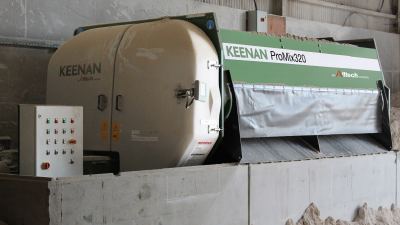Media & Events
Improving Silage Quality

“We must be prepared for every eventuality”
It’s taken a long time but milk prices have finally recovered. Whilst we hope that it will be for good this time, historical analysis of milk price trends suggest that we have 12-18 months with it at or around its current level before it starts to decline again. Whilst this has been the trend previously, we now live in a very volatile world and although we hope political changes such as Brexit will lead to more protectionist policies towards domestic produce, we must be prepared for every eventuality.
Milk prices currently make dairying sustainable allowing us to work towards undoing the damage from the last two years whilst also preparing ourselves for the next time. One way of achieving this is by increasing the milk we produce from forage. This does not necessarily mean more overall milk production (although this can be included in a strategy towards that) but reducing the overall cost of milk production. Increasing M.E. in silage by 0.5MJ/M.E. would equate to roughly 1 litre of extra milk in a purely grass based system, or the same milk for 1kg of concentrate less depending on your goals. With concentrate costs on the increase these figures are vital as saving 1kg of concentrate per cow per day at an estimated cost of £210 per tonne would equate to £630 per month saving for every 100 cows in the herd. Additionally, figures suggest that farms with higher milk from forage have lower vet and medicine costs, fewer involuntary culls and better replacement rates.
“Dry matter is in many respects, the most important part of silage”
The question now is how to increase silage quality? Targeting dry matter must be the first goal to make good silage. 30% dry matter is the ideal as being excessively wet or dry will affect palatability and intake. Dry matter is in many respects the most important part of silage as it is a reflection on what is lost in the ensiling process. These losses are the best parts of the silage as the indigestible lignin fraction is static, meaning that the more quality we lose the higher the lignin becomes as it is concentrated. Silages with a high Ash content are also likely to have suffered high losses as the amount of Ash (the inorganic fraction of silage) is concentrated.
From the moment that grass is cut it is dying and vital nutrients are being lost. Between 1% and 2% of metabolisable energy (M.E.) can be lost based on management and technique from cutting to ensiling. The remaining silage parameters are set by Crop Quality. A 24-hour wilt or less is ideal for retaining nutrients however this must be measured against weather and conditions and the requirement for 30% dry matter silage.
“The lower the grass is cut, the lower the silage quality will be”
In pursuit of higher dry matter silage cutting and frequency must also be considered. The stem of the plant has the lowest digestibility therefore the more that is included in the crop the lower the D-Value and M.E. will be. In simple terms the lower the grass is cut the lower the silage quality will be. Additionally, the greater the time between cuts the greater the required wilt time will be due to the fact that there will be more material to dry out. Whilst this will increase dry matter yield D-Value can reduce by as much as 3.5 units. Considering these facts, a five-week cutting cycle is optimum.
Furthermore, studies suggest that early cutting on first cut grass produces a better yield on second cut and a greater total yield across the two cuts. Whilst this method will increase silage making costs against producing a single bulkier crop the reduction in concentrate cost, health related costs, forced culls etc will more than outweigh this, increasing overall farm efficiency and profit.
Finally, the trend of making silage with a forage wagon requires consideration. This is in many respects a great advancement in the silage making process as it allows silage production on a field by field basis, rather than waiting for the entire silage platform to be ready. Where forage wagon silage can struggle is in regard to compaction. Due largely to the fact that grass is unloaded in a pile in the pit it can be difficult to spread and roll to requirement making it more difficult to achieve adequate compaction. More densely compacted silages have a greater aerobic stability which reduces losses. In these circumstances a compactor can go a long way towards improving quality of the silage. It is worth noting that only very wet silages can be over compacted so if dry matter targets are being achieved a compactor can very quickly pay for itself.
The topic of silage and its production is vast but with greater attention to detail and an eye on our systems we can all benefit from improved silage quality.
Author: David Jones

























